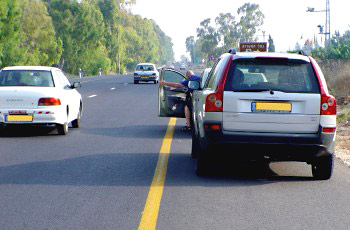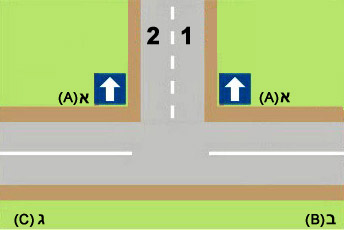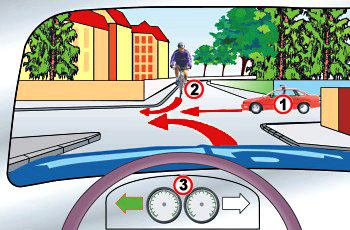Question:1
How should you conduct yourself at an exit from a premises or from an access road to a house, when you are about to cross the sidewalk (pavement)?
Category : Rules and Regulations
Question:2
What is a driver required to do when one of his two headlights malfunctions during “light time”?
Category : Rules and Regulations
Question:3
According to the law, what is the validity period of demerit points incurred by a driver?
Category : Rules and Regulations
Question:4
Is it permitted to park a vehicle within an intersection?
Category : Rules and Regulations
Question:5
When is it permitted to turn left, from a lane other than the left lane?
Category : Rules and Regulations
Question:6
Define level crossing:
Category : Rules and Regulations
Question:7
Are passengers permitted to get in or out of the off side of a vehicle?

Category : Rules and Regulations
Question:8
Are you permitted to pass another vehicle on its right side?
Category : Rules and Regulations
Question:9
What is the duty of a person who owns or has control of a vehicle?
Category : Rules and Regulations
Question:10
Upon completion of the two year “new driver” period, a regular driver’s license will not be given to a “new driver” who was convicted of:

Category : Rules and Regulations
Question:11
Is it obligatory to obey the directions of a Public Works Department employee in uniform?
Category : Rules and Regulations
Question:12
Is it permitted to open the vehicle’s doors while driving?
Category : Rules and Regulations
Question:13
When does the law require a driver to “reduce the speed of a vehicle”?
Category : Rules and Regulations
Question:14
The following illustration shows an intersection with traffic signs. What is the correct manner of making a turn from street C to street A?

Category : Rules and Regulations
Question:15
Which of the roads in the following illustration is a one-way road?

Category : Rules and Regulations
Question:16
When you approach a pedestrian crossing that is marked on the road:
Category : Rules and Regulations
Question:17
On a narrow two-way road with an unbroken separation line dividing the two lanes, how would you conduct yourself when a horse drawn wagon drives before you and the opposite traffic lane is open?
Category : Rules and Regulations
Question:18
The boundary of the intersection / junction is determined by:
Category : Rules and Regulations
Question:19
What is “night time”?
Category : Rules and Regulations
Question:20
What law is applied to a driver of a hand propelled vehicle?
Category : Rules and Regulations
Question:21
What does the law state about the non-use of a vehicle for a period of more than one month?
Category : Rules and Regulations
Question:22
When is it permitted to use the horn for giving a warning signal in an urban road?
Category : Rules and Regulations
Question:23
Is it permitted to push a vehicle, while its engine is shut-off, into a roadway to which vehicle entry is prohibited?
Category : Rules and Regulations
Question:24
You are driving vehicle no. 3. According to the rules of giving right-of-way, in what order should the vehicles enter the intersection?

Category : Rules and Regulations
Question:25
How would you (vehicle no. 2) conduct yourself in the following intersection?

Category : Rules and Regulations
Question:26
Where inside a vehicle should the reflective traffic vest be placed?
Category : Rules and Regulations
Question:27
Who is responsible for a vehicle emitting smoke above statutory levels?
Category : Rules and Regulations
Question:28
When is it lawfully required to perform a vehicle license test?
Category : Rules and Regulations
Question:29
When is it prohibited to stop or park a vehicle?
Category : Rules and Regulations
Question:30
Which of the following sentences is correct: The law prohibit drivers from making a left U-turn:
Category : Rules and Regulations

